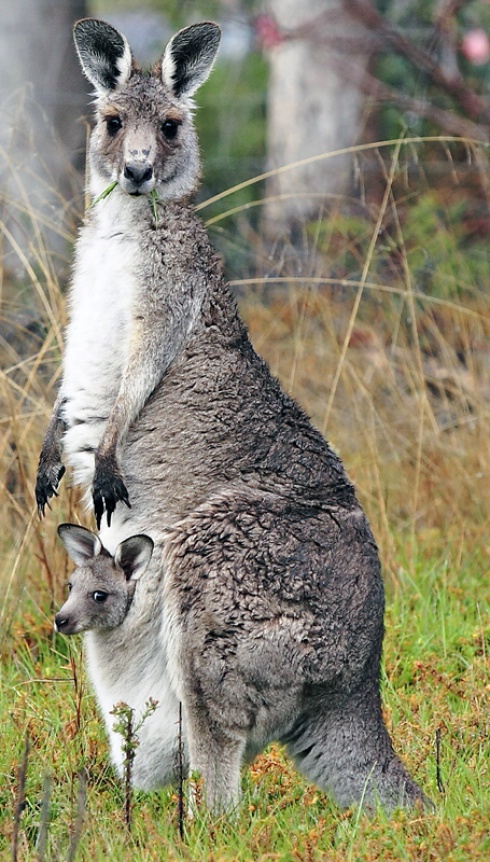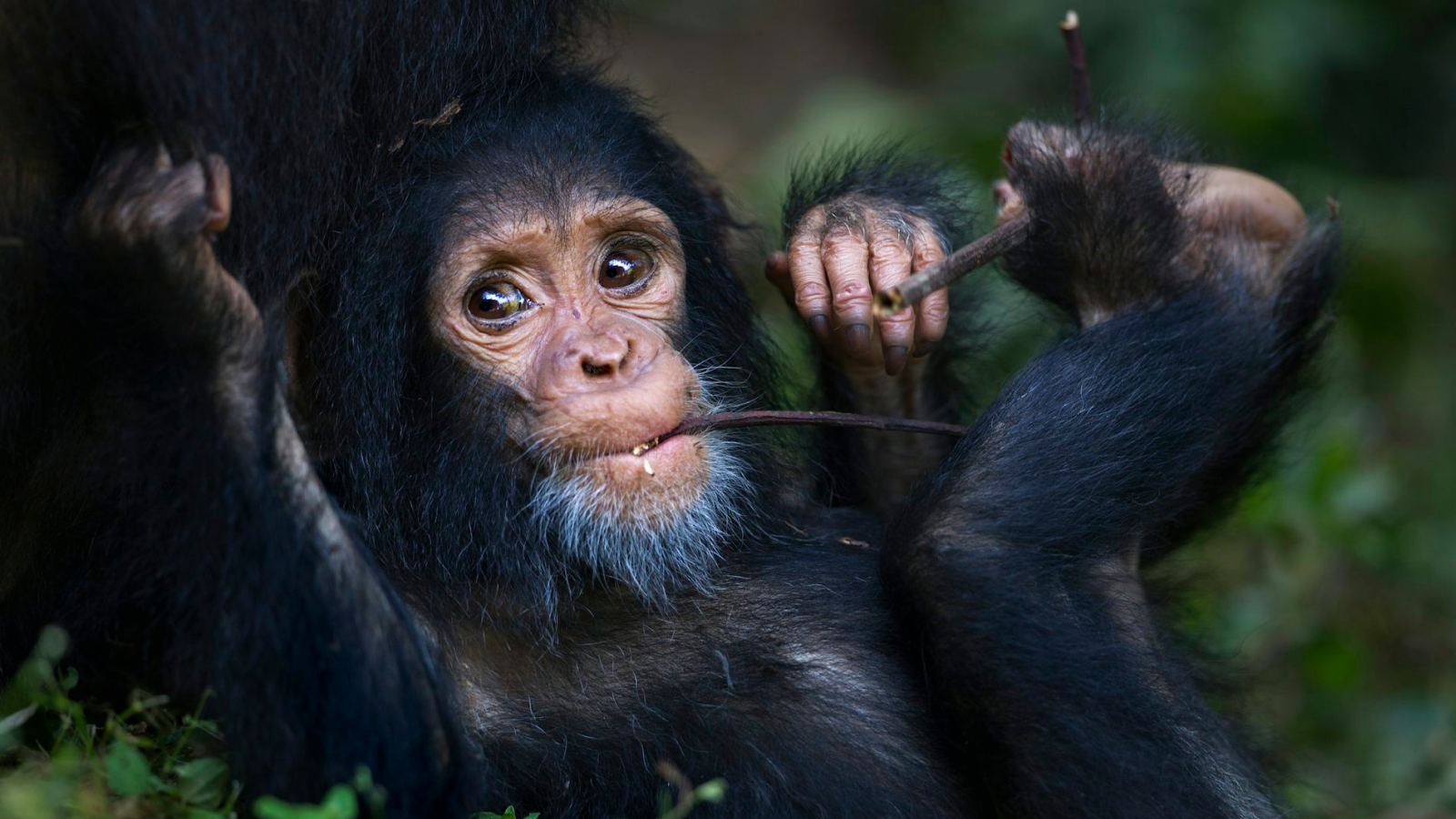Pouch Puzzle: Kangaroo Moms Mysteriously Swap Offspring

Kangaroos adopt. It doesn't happen often, but to the astonishment of biologists at Wilsons Promontory National Park in Australia, sometimes a mother bends forward, opens her arms and invites someone else's youngster to hop into her pouch. Once made, the mix-up endures, lasting through the remaining weeks of "pouch life" and on during months of the "young-at-foot" stage, when the growing juvenile kangaroo continues to nurse. "It's a complete surprise to us," said Graeme Coulson, a zoology professor at the University of Melbourne in Australia. Coulson described the baby swapping -- in which two mothers end up with each other's young -- this month at a joint meeting of the American Society of Mammalogists and the Australian Mammal Society in Portland, Ore. Although rare cases of marsupial fostering have previously been reported in captivity, and biologists have used fostering in breeding programs, this appears to be the first documented report of spontaneous adoptions in the wild, said Roberta Bencini, vice president of the Australian Mammal Society and professor of animal biology at the University of Western Australia. "That's really quite an unusual discovery," said Bencini, who was not involved in Coulson's research. "I would like to find out why." So would Coulson. The exchanges seem to have no apparent benefit for the mother, who squanders her own resources on another's offspring, Coulson said. His best guess is that the swaps are simply an error by one mother later compounded -- or perhaps just accepted -- by another. According to doctoral student Wendy J. King from the University of Queensland in Australia, it might happen when a group of mothers is startled, perhaps by a predator attack. King said via email that nursing mothers are primed to accept a youngster into their pouch during the "in-and-out" phase, roughly two months when the young sometimes hop out to explore but then return. Although the mothers normally would push away the wrong one, King said that their recognition system might be overwhelmed by intense pressure from a predator. Whatever causes them, Coulson said that these adoptions should help remind kangaroo researchers never to assume anything -- not even that the young in a mother's pouch is her own genetic offspring. Researchers discovered the adoptions partly because their work in Wilsons Promontory is so extensive. Hundreds of animals have been collared, given ear tags and genotyped from a tissue sample taken when they are tagged. The project, which began in 2008, is a 15-year-long study of population dynamics and reproductive strategies in the Eastern gray kangaroo. Biologists first noticed something odd in October 2009. One of the tagged youngsters was no longer with its mother. At first, Coulson said, they wondered if they had made a mistake in record keeping. Then another mismatch turned up. King said that so far the group has documented seven adoptions among 134 juvenile kangaroos it has marked, a 5 percent adoption rate. Four were simple swaps, with two mothers ending up with each other's young. Because many kangaroos that use the park aren't tagged, researchers don't know who the mothers are for the other three -- they just know the genotypes don't match. Interestingly, although some animals do help raise close relatives, biologists have ruled out strong kinship ties among the adoptive mothers. These aren't sisters or other close relatives helping each other out. Researchers are observing the kangaroos on a grassy swath of parkland that doubles as a landing strip for firefighting planes. It’s a favorite gathering area, partly because of the thick cover of nearby shrubs, and has attracted around 1,000 kangaroos. That density might be one of the factors contributing to the adoptions, said Tony Friend, president of the Australian Mammal Society, who was not involved in the research. Because the adoption findings are so new, no one has yet had time to test that theory. Millions of Eastern gray kangaroo roam Australia. Along with its newly discovered willingness to adopt, it has other reproductive quirks shared by some or all marsupials: two uteruses, two vaginas, and the ability to nurture two offspring at different stages of life, producing different kinds of milk at once. Milk for the young at foot comes from a larger, extended teat and is richer in fat and protein, while milk for the young in pouch is richer in carbohydrates. However, the kangaroos don't have the pouch space to simultaneously support two young at the in and out stage. Because researchers detected the adoptions when tags or genotypes didn’t match, they cannot describe how one unfolded exactly, but Coulson’s best guess is that it begins like this: After about eight months in the pouch, when they are knee-high to a human and weigh 10 or 12 pounds, young Eastern grays start to explore, hopping around among a crowd of kangaroos, each young kangaroo darting from its mother then circling back. During their wanderings, mother and young call out to each other. But things seem to get a bit fuzzy for the young kangaroos once they've had enough playtime and want to go home. "They will approach anything that looks vaguely like a kangaroo, including males," Coulson said .
Adult males swat the youngsters away, but a mother will bend down and sniff the small kangaroo. Typically, if she doesn't smell her own offspring, she'll also push it away. During an adoption, the mother instead must assume her characteristic "hop aboard" posture: She leans forward, spreads her arms wide, and relaxes the ring of muscles around her pouch so that it flops open, dangling low. The little kangaroo then dives head-first into the pouch before swiftly somersaulting around to make itself at home. Soon after, Coulson surmises, the adoptee's real mother and the adopting mom's now-pouchless offspring find each other and accept the inevitable. Although there are plenty of other romping and nursing opportunities afterward, researchers have not seen an adopted kangaroo switch a second time, even back to its own mother. Among the many unanswered questions are whether a mother who adopted once is likelier to adopt again, and whether any one time during the in and out phase is more common for adopting. With about 100 adult females now marked, King said, “We’re hoping to see more switches in the pouch young of this year to help clarify the picture.”
This story was provided by Inside Science News Service contributing writer Carrie Peyton Dahlberg. Inside Science News Service is supported by the American Institute of Physics.
Get the world’s most fascinating discoveries delivered straight to your inbox.


